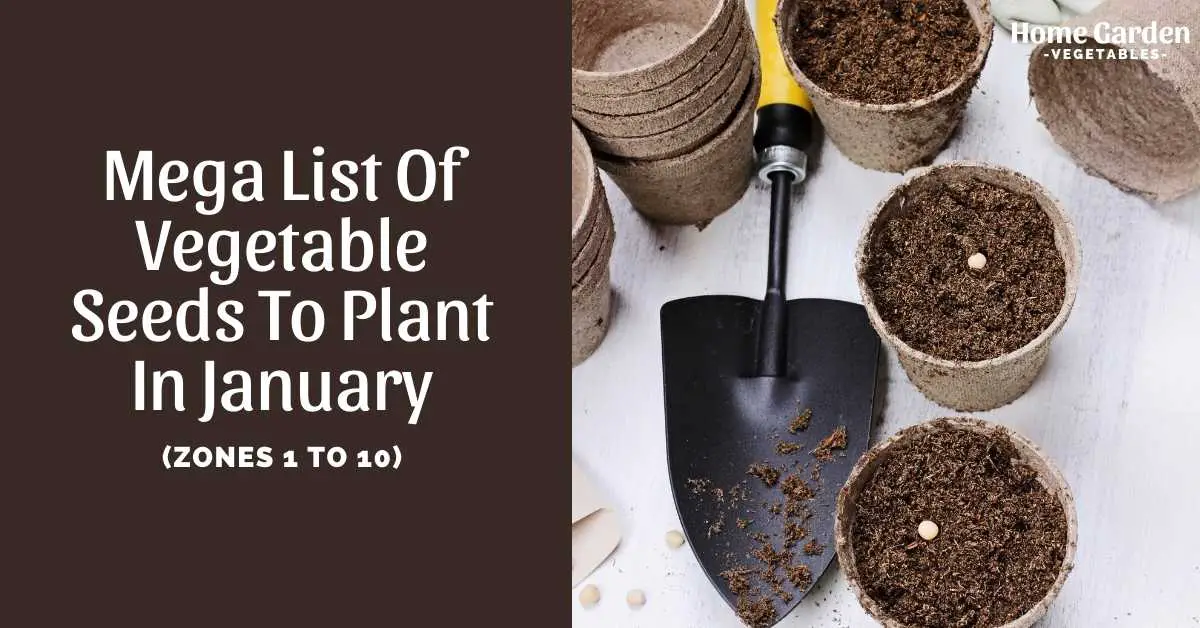January is already here! Now is the time to start planning your vegetable garden. Plan a trip to the local garden centre and take a look at some seed catalogues. Think about what you’d like to see in your garden in the upcoming growing season. Though it’s not a major gardening month since it’s still too cold for most vegetables, there are some that won’t let your growing space go barren.
You might have more options if you live in a warmer climate. For cooler climates, you may want to wait a little longer before the temperatures are suitable for most crops. Meanwhile, you can start your seed shopping and even start planting them indoors so that they’re ready to be transplanted outdoors when it’s time.
Reader Poll: What online courses would interest you?
So what are the vegetable seeds to plant in January? Read on, and you’ll learn the best vegetables you can sow this month for different zones.
Vegetable Seeds To Plant In January From Zone 1 To 10
Different zones have different climates, so our planting advice may vary slightly for each. Here’s a list of what you can plant in January in different zones.
Zones 1 to 4
If you live in zones between 1 and 4, it’s still too early to plant anything out in the yard. It’s also a bit early to start vegetables indoors if you plan to set out the transplants in the garden once they’re ready.
Subscribe to our newsletter!
However, if gardening is what you live for, there are plenty of activities to keep you busy. You can start looking at catalogs and order the seeds you’ll grow in the coming months. You can grow:
- Microgreens
- herbs indoors in small pots or window boxes.
Microgreen mix seeds are easily available in the month and sprout within weeks for some fresh, nutrient-rich addition to your salads.
Zone 5
For zone 5, you can start onion and chives indoors by the end of the month. It’s also a good idea to place your order for cool-season crops.
- broccoli
- spinach
- lettuce
- cauliflower
- peas seeds
Zone 6

Get seeds for cool-season crops, like:
- cabbage
- broccoli
- celery
- cauliflower
By mid-January, start these vegetables indoors, especially the ones that take longer growing seasons. Parsley and celery take especially long to germinate, so make sure you start them in time. Onion seeds can also be started around the same time.
Zone 7
Crops that take a longer growing season, including celery and parsley should be started indoors earlier in the month. It’s also a good idea to start onion indoors since it takes a long time to develop enough to be transplanted in the garden. By the end of January, you can also sow other cool-season crops indoors, including cabbage, cauliflower, broccoli, kale, and lettuce.
Zone 8
Zone 8 gardeners should have their cool-season seeds ready to be started indoors. Start cabbage, lettuce, celery, parsley onion, and other cool-season crops indoors earlier in the month.
By the end of the month, once the seedlings are about 4 inches tall, harden them off by placing them outdoors for a couple of hours every day. Soon they’ll be ready to be transplanted in the ground.
By late January, if the soil is workable, bare-root asparagus and peas seeds can be planted directly in the ground.
Zone 9

January is a major growing season for your cool-season crops if you’re living in zone 9. If you haven’t already started your cool-season vegetable seeds, now is the time to do so. You can also start some warm-season vegetables indoors. Sow peppers, tomatoes, eggplant, and squash indoors by mid-January to be ready for transplanting just in time for spring.
Ideally, you should already have started broccoli, cabbage, celery, and cauliflower indoors in the earlier months. They’ll be ready to be transplanted outdoors by mid of January. Harden them off for a couple of days before placing them in the garden.
Since zone 9 is warmer, you can also plant several vegetables by direct seeding in the garden. Kale, lettuce, radishes, peas, and onions can be sown directly in the ground around this time. Most cool-weather herbs, like parsley, and chives can also be sown in the garden.
Zone 10
In zone 10, the weather is warmer than elsewhere, so you have lots of growing opportunities as the temperatures start rising. By January, it’s time to start warm-season crops indoors. Sow tomatoes, peppers, and eggplants in pots indoors early in January.
Leafy greens, carrots, radishes, cauliflower, broccoli, and peas can directly be sown in the garden. Herbs, like Asian greens, parsley, and chives, can also be planted outdoors.
If you already have broccoli, cabbage, onion, potatoes, and other cool-season crops started indoors last month or early in January, it’s a good time to transplant them outdoors.
Conclusion
Whether they live in chilly northern zones or warmer climates, gardeners find a way to utilize their property in the best possible way and get something delicious and nutritious out of it. Keep track of your gardening calendar and make good use of each month. Even if winters aren’t over yet in your region, there are plenty of vegetables you can start indoors to give you a headstart on the actual growing season.

